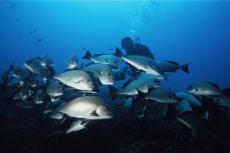Hawksbill Sea Turtles in the Indian Ocean Rely on Deep, Remote Habitats
Recent studies illuminate the elusive feeding habits of hawksbill sea turtles, offering insights into their survival and the conservation efforts needed to protect these marine creatures.
Recent studies have employed sophisticated satellite tracking technology to follow hawksbill sea turtles to their most frequented feeding grounds in the Indian Ocean. These advances have allowed researchers to gain unprecedented insights into the turtles' precise movements and behaviours at depths previously unobserved.
Contrary to the assumption that these turtles feed exclusively in shallow reefs, the findings indicate that their feeding habits extend to the deep seabed. This adaptability in feeding behaviour underscores the resilience of the turtles and the complexity of their habitat needs, highlighting the importance of diverse conservation strategies.
Understanding the hawksbill sea turtles' reliance on both shallow and deep-sea environments is critical to conservation efforts. Protecting their habitats requires comprehensive strategies that encompass the full range of their feeding grounds, from coral reefs to deep-sea beds.
The study opens up new avenues for research and suggests that the conservation of hawksbill turtles is a multifaceted challenge.
While there are a few anecdotal observations, the importance of mesophotic depths and submerged banks for foraging marine megafauna such as sharks, turtles, and marine mammals is largely unknown. For these groups, one important way of identifying key areas for conservation is through satellite tracking, which allows animals to be followed regardless of wherever they move.
Fact file
The hawksbill sea turtle (Eretmochelys imbricata) is a critically endangered sea turtle in the family Cheloniidae. The species has a global distribution that is largely limited to tropical and subtropical marine and estuary ecosystems.
Hawksbills get their name from their unique beak-like mouth, which resembles that of a hawk and is perfect for finding food sources in hard-to-reach cracks and crevices. Adult hawksbill sea turtles typically grow to 1m (3ft) in length and weigh 80kg (180 lb) on average. The hawksbill is biofluorescent and is the first reptile to be recorded with this characteristic. It is not known whether the effect is due to the turtle's diet, which includes biofluorescent organisms such as the hard coral Physogyra lichtensteini.








































